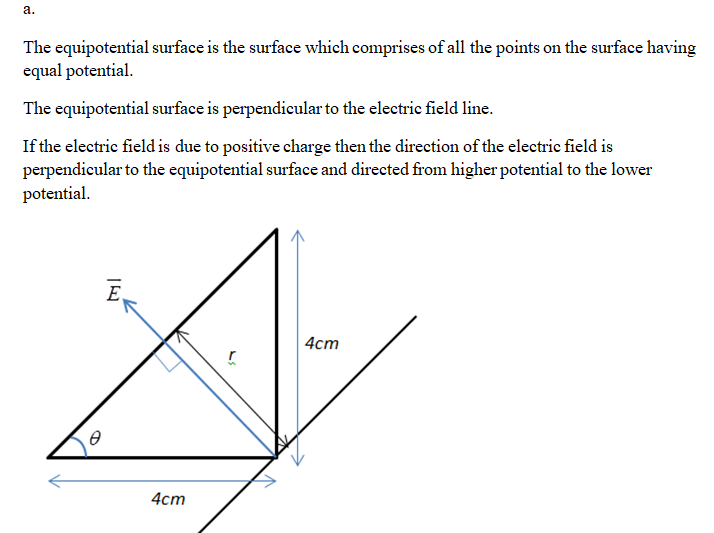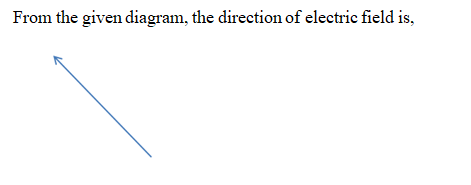In the diagram below each unit on the horizontal axis is 4.00 cm and each unit on the vertical axis is 4.00 cm. The equipotential lines in a region of uniform electric field are indicated by the blue lines. (Note that the diagram is not drawn to scale.) 6V 12 V 18 V 24 V 30 V (a) What is the direction of the electric field? (b) Determine the magnitude of the electric field in this region. V/m (c) Determine the shortest distance for which the change in potential is 3 V. mm
In the diagram below each unit on the horizontal axis is 4.00 cm and each unit on the vertical axis is 4.00 cm. The equipotential lines in a region of uniform electric field are indicated by the blue lines. (Note that the diagram is not drawn to scale.) 6V 12 V 18 V 24 V 30 V (a) What is the direction of the electric field? (b) Determine the magnitude of the electric field in this region. V/m (c) Determine the shortest distance for which the change in potential is 3 V. mm
College Physics
11th Edition
ISBN:9781305952300
Author:Raymond A. Serway, Chris Vuille
Publisher:Raymond A. Serway, Chris Vuille
Chapter1: Units, Trigonometry. And Vectors
Section: Chapter Questions
Problem 1CQ: Estimate the order of magnitude of the length, in meters, of each of the following; (a) a mouse, (b)...
Related questions
Question

Transcribed Image Text:In the diagram below each unit on the horizontal axis is 4.00 cm and each
unit on the vertical axis is 4.00 cm. The equipotential lines in a region of
uniform electric field are indicated by the blue lines. (Note that the diagram
is not drawn to scale.)
6 V
12 V
18 V
24 V
30 V
(a) What is the direction of the electric field?
(b) Determine the magnitude of the electric field in this region.
V/m
(c) Determine the shortest distance for which the change in potential is
3 V.
mm
Expert Solution
Step 1


Trending now
This is a popular solution!
Step by step
Solved in 3 steps with 5 images

Knowledge Booster
Learn more about
Need a deep-dive on the concept behind this application? Look no further. Learn more about this topic, physics and related others by exploring similar questions and additional content below.Recommended textbooks for you

College Physics
Physics
ISBN:
9781305952300
Author:
Raymond A. Serway, Chris Vuille
Publisher:
Cengage Learning

University Physics (14th Edition)
Physics
ISBN:
9780133969290
Author:
Hugh D. Young, Roger A. Freedman
Publisher:
PEARSON

Introduction To Quantum Mechanics
Physics
ISBN:
9781107189638
Author:
Griffiths, David J., Schroeter, Darrell F.
Publisher:
Cambridge University Press

College Physics
Physics
ISBN:
9781305952300
Author:
Raymond A. Serway, Chris Vuille
Publisher:
Cengage Learning

University Physics (14th Edition)
Physics
ISBN:
9780133969290
Author:
Hugh D. Young, Roger A. Freedman
Publisher:
PEARSON

Introduction To Quantum Mechanics
Physics
ISBN:
9781107189638
Author:
Griffiths, David J., Schroeter, Darrell F.
Publisher:
Cambridge University Press

Physics for Scientists and Engineers
Physics
ISBN:
9781337553278
Author:
Raymond A. Serway, John W. Jewett
Publisher:
Cengage Learning

Lecture- Tutorials for Introductory Astronomy
Physics
ISBN:
9780321820464
Author:
Edward E. Prather, Tim P. Slater, Jeff P. Adams, Gina Brissenden
Publisher:
Addison-Wesley

College Physics: A Strategic Approach (4th Editio…
Physics
ISBN:
9780134609034
Author:
Randall D. Knight (Professor Emeritus), Brian Jones, Stuart Field
Publisher:
PEARSON